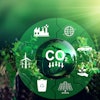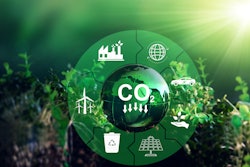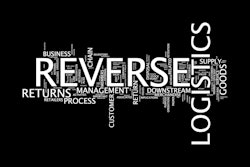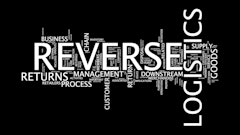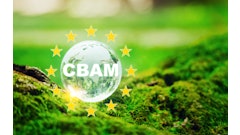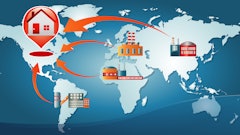
Earlier this year, it was reported that the EU is preparing to pare back parts of its new sustainability reporting rules, easing requirements on companies and limiting how far they must look into their supply chains.
For global businesses, this move points to a growing problem. Just as Scope 3 emissions and labor rights issues are coming under heightened scrutiny, the rules meant to guide companies are being diluted and fragmented. The result is a landscape where some regions are pushing forward, others are backpedaling, and organizations are left to navigate uneven expectations at significant cost.
From voluntary statements to auditable data
For years, sustainability reporting was largely voluntary. Companies published ESG reports to signal commitment, but the numbers were rarely verified and often relied on generalized estimates. That period is ending. New frameworks such as the EU’s Corporate Sustainability Reporting Directive (CSRD), IFRS S2/ISSB standards, and disclosure rules at the state level in the U.S. are moving sustainability into the realm of auditable data. This is particularly visible with Scope 3 emissions, which make up the largest share of a company’s footprint and are now front and center in regulatory requirements.
At the same time, expectations are widening beyond carbon. Forced labor, health and safety, and modern slavery risks are increasingly viewed as core supply chain responsibilities. Regulators, investors, and customers want assurance that companies manage social and labor issues with the same rigor as emissions. Ratings, audits, and supplier assessments are expanding to cover the full spectrum of ESG.
Why certification matters
Too often, ESG reporting remains a box-ticking exercise. Certification helps move beyond self-declared claims by introducing independent, verifiable proof. Standards such as ISO 14001 enable organizations to reduce emissions, cut resource risks, and prepare for climate regulations. In the social sphere, ISO 45001 and SA8000 strengthen worker protections and community trust. For supply chains, ISO 20400 and ISO 22301 improve procurement practices and business continuity, building transparency and reducing disruptions.
Certification helps ensure progress is credible and measurable. Reporting under GRI or CSRD becomes far more reliable when backed by third-party verification. Without it, companies risk publishing numbers that look impressive on paper but are later discredited. Independent assurance both protects brand reputation and strengthens resilience. Investors and regulators can place greater confidence in verified data, and customers see commitments that translate into real improvements.
Fragmentation and lessons from the field
The lack of harmonization across regulations compounds the challenge. A company may face strict reporting under CSRD in Europe, lighter ISSB rules elsewhere, and a patchwork of state-level mandates in the U.S. The result is duplication of effort, higher compliance costs, and delays when crossing regulatory boundaries. Global firms estimate these inconsistencies increase costs by as much as 20-30%. They also heighten reputational risk, as inconsistent disclosures create openings for accusations of greenwashing.
Through years of involvement in standards committees and cross-sector initiatives, several lessons stand out.
First, build on existing frameworks. The ISO 14064 series, the GHG Protocol, and IFRS S2/ISSB are recognized globally and reduce the need for companies to reinvent approaches.
Second, prioritize suppliers that have the greatest impact. A relatively small group often drives a disproportionate share of emissions or social risks, and focused engagement there delivers meaningful results.
Third, strengthen data step by step. Spend-based estimates may be necessary at the outset, but pilots that capture activity-level data are a requisite for moving toward verified numbers. Finally, invest in people. Training suppliers and employees on climate and ESG issues consistently accelerates progress, builds stronger partnerships, and reduces long-term risk.
Verified data always wins
Supply chain sustainability is no longer about keeping operations moving – it’s about preparing for a regulatory environment that demands verification at every turn. The era of unchecked supplier reports and generous estimates is ending. Companies clinging to these outdated approaches will find themselves exposed when regulators and investors demand proof. The smart money is on certification. Organizations that embrace third-party verification aren’t just meeting today’s requirements, they’re building competitive advantages for tomorrow. They reduce risk, cut long-term costs, and earn the trust that becomes currency in an increasingly scrutinized market.
Earlier this year, it was reported that the EU is preparing to pare back parts of its new sustainability reporting rules, easing requirements on companies and limiting how far they must look into their supply chains.
For global businesses, this move points to a growing problem. Just as Scope 3 emissions and labor rights issues are coming under heightened scrutiny, the rules meant to guide companies are being diluted and fragmented. The result is a landscape where some regions are pushing forward, others are backpedaling, and organizations are left to navigate uneven expectations at significant cost.
From voluntary statements to auditable data
For years, sustainability reporting was largely voluntary. Companies published ESG reports to signal commitment, but the numbers were rarely verified and often relied on generalized estimates. That period is ending. New frameworks such as the EU’s Corporate Sustainability Reporting Directive (CSRD), IFRS S2/ISSB standards, and disclosure rules at the state level in the U.S. are moving sustainability into the realm of auditable data. This is particularly visible with Scope 3 emissions, which make up the largest share of a company’s footprint and are now front and center in regulatory requirements.
At the same time, expectations are widening beyond carbon. Forced labor, health and safety, and modern slavery risks are increasingly viewed as core supply chain responsibilities. Regulators, investors, and customers want assurance that companies manage social and labor issues with the same rigor as emissions. Ratings, audits, and supplier assessments are expanding to cover the full spectrum of ESG.
Why certification matters
Too often, ESG reporting remains a box-ticking exercise. Certification helps move beyond self-declared claims by introducing independent, verifiable proof. Standards such as ISO 14001 enable organizations to reduce emissions, cut resource risks, and prepare for climate regulations. In the social sphere, ISO 45001 and SA8000 strengthen worker protections and community trust. For supply chains, ISO 20400 and ISO 22301 improve procurement practices and business continuity, building transparency and reducing disruptions.
Certification helps ensure progress is credible and measurable. Reporting under GRI or CSRD becomes far more reliable when backed by third-party verification. Without it, companies risk publishing numbers that look impressive on paper but are later discredited. Independent assurance both protects brand reputation and strengthens resilience. Investors and regulators can place greater confidence in verified data, and customers see commitments that translate into real improvements.
Fragmentation and lessons from the field
The lack of harmonization across regulations compounds the challenge. A company may face strict reporting under CSRD in Europe, lighter ISSB rules elsewhere, and a patchwork of state-level mandates in the U.S. The result is duplication of effort, higher compliance costs, and delays when crossing regulatory boundaries. Global firms estimate these inconsistencies increase costs by as much as 20-30%. They also heighten reputational risk, as inconsistent disclosures create openings for accusations of greenwashing.
Through years of involvement in standards committees and cross-sector initiatives, several lessons stand out. First, build on existing frameworks. The ISO 14064 series, the GHG Protocol, and IFRS S2/ISSB are recognized globally and reduce the need for companies to reinvent approaches. Second, prioritize suppliers that have the greatest impact. A relatively small group often drives a disproportionate share of emissions or social risks, and focused engagement there delivers meaningful results. Third, strengthen data step by step. Spend-based estimates may be necessary at the outset, but pilots that capture activity-level data are a requisite for moving toward verified numbers. Finally, invest in people. Training suppliers and employees on climate and ESG issues consistently accelerates progress, builds stronger partnerships, and reduces long-term risk.
Verified data always wins
Supply chain sustainability is no longer about keeping operations moving – it’s about preparing for a regulatory environment that demands verification at every turn. The era of unchecked supplier reports and generous estimates is ending. Companies clinging to these outdated approaches will find themselves exposed when regulators and investors demand proof. The smart money is on certification. Organizations that embrace third-party verification aren’t just meeting today’s requirements, they’re building competitive advantages for tomorrow. They reduce risk, cut long-term costs, and earn the trust that becomes currency in an increasingly scrutinized market.
In a world where sustainability rules shift like quicksand, only one thing remains constant and that is verified data always wins. The choice is simple, pursue verified assurance or risk falling behind.

